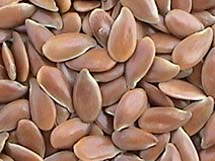
Linseed oil
First, the product description:
Linseed oil is taken from the seeds of flax. An annual herb of the genus Linum. Native to Central Asia, it grows in temperate and tropical countries. Mainly the United States, Argentina, India and the former Soviet Union. China's northwestern regions and Inner Mongolia produce the most, and northeast and north China also have plantings.
The whole flaxseed oil content is between 29% and 44%, the shell content is between 20% and 45%, and the shell also contains about 17%-20% of the oil, so the flaxseed oil is generally not shelled.
Linseed oil is golden yellow, flaxseed oil is dark amber and has a special odor. This odor is caused not only by the volatile impurities in the oil, but more importantly because the oil contains more highly unsaturated fatty acids. Deodorized linseed oil has an aftertaste. Fresh linseed oil is edible.
Physicochemical constants of linseed oil:
Relative density (d20°C4°C) 0.9270-0.9375
Refractive index (n20°CD) 1.4795-1.4835
Freezing Point (°C) -27~-18
Viscosity (E020°C) about 7.4
Iodine value (g iodine/100g oil) 170-205
Saponification value (mgKOH/g oil) 189-196
Unsaponifiables (%) less than 1.7
Average molecular weight of fatty acids 279-307
Fatty Acid Composition of Linseed Oil (%):
Fatty acid about 5.7
Stearic acid 3.8
Oleic acid 19.2
Linoleic acid 12.7
Α-linolenic acid 58.5
The flaxseed contains more wax in the shell, and it dissolves in the oil when making oil. Therefore, flaxseed oil precipitates at a low temperature, and the main component is wax. Flax oil has a high content of a-linolenic acid, so its drying performance is very good. It can quickly thicken under the action of air. If it is coated with a thin film, it will form an elastic, strong oxidized flax oil film, which is covered by this film. The items are protected from air, moisture, and mechanical damage. Therefore, a large amount of linseed oil is used to make mature oils, varnishes, paints, linoleum, linoleum, inks, and soft soaps. Linseed oil is generally not eaten. It has been eaten in some Eastern European countries, but its bad odor is difficult to eliminate. It is not suitable for the preparation of shortening and margarine, and has no place in consumption.
The flaxseed oil obtained from flaxseed contains more phosphoric acid and colloidal substances. When used as a coating or paint, these substances must be removed in advance. The method is usually hydration and alkali refining. Precipitation precipitates when heating clear and transparent linens. This phenomenon is called "cracking." The precipitate that precipitates is called "heated precipitate" and its components contain calcium phosphate and magnesium phosphate.
Linseed oil absorbs sulfur (up to 10%) and sulfur chloride (up to 30%) making it a vulcanized ointment that can be used as a substitute for rubber.
The physicochemical constants and composition of linseed oil vary greatly depending on the variety, cultivation conditions, and place of production. The iodine value of flaxseed oil produced in temperate regions is higher than that in temperate regions, and the freezing point is low. This is due to the different degree of unsaturated fatty acids in the oil.
Flaxseed
Product Description:
Flax (also known as flax) is an annual herb, 30-100 cm in height, belonging to the genus Linaceae. Its stem bark is long and tough, and it is a good textile raw material. Flax is native to Europe and Asia, in the Middle East and the Near East. In addition to the hot equator and extreme cold regions in the world, the vast warm tropical regions can be cultivated. Northwest China and Liaoning, Fujian, Sichuan, Inner Mongolia and Taiwan have grown more.
Flax is both a fiber crop and an oil crop, but the varieties are different. Flax fruits are pods, spherical, 6-8 mm long, 6-7 mm in diameter, with five-lobed tops and about 10 seeds. Flaxseeds are flat ovate, dicotyledonous, dicotyledonous, glossy, brown, oily 30%-40%, contain 15%-20% oil in the shell, so the oil does not shell, usually using pre-extracted-leaching method.